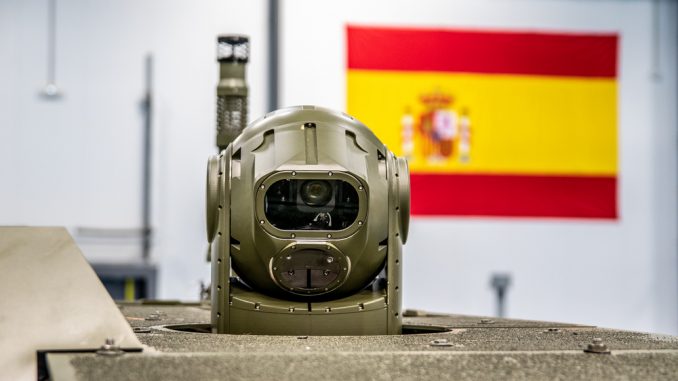
At the recent NATO Summit in Madrid and in a truly extraordinary way since it is the first time something like this has happened, the company Escribano Mechanical & Engineering had the opportunity to show several of its most cutting-edge products to the political leaders of the Member States and the rest of the invited nations. That is where they carried their hard kill anti-drone solution. This is part of the C-UAS CERVUS III project developed by TRC and the 31st Army Regiment, the FGK guidance kit and two of its electro-optical systems. On the one hand, the well-known OTEOS that has been in service for some time. On the other, the new APOLO which is assembled the latest version of the Guardian 30 turret that will equip the 8×8 VCRs, as well as the Guardian 2.0 that was also present in the Summit. It is to these two systems that we will devote this article.
Before getting to the substance, it may be convenient to explain, albeit briefly, what an electro-optical system is, why they are crucial components in modern weapons systems and what is the Spanish experience in the field. After all, although many ignore it, some of the most advanced equipment in the world has been manufactured in our country for some time. This is why it has been and is exported to many destinations.
An electro-optical system is basically a set made up of one or more Optical Sensors and all the electro-mechanical elements that allow them to be controlled, including orienting them in space, varying the elevation and azimuth of their lines of sight. In addition to highly accurate servomotors, which allow the cameras to be directed wherever the operator considers with minimal deviation, the more complex and modern models include stabilisation systems that allow the system to keep the lens in focus even when the operator is moving. Furthermore, far from using only optics for the visible spectrum (daylight), it is becoming increasingly common to add IR (infrared) cameras and other equipment such as rangefinders that allow the distance to the target to be measured with great precision. If necessary, this data is transmitted to the weapon and even to the ammunition, if it is programmable.
From the simple optical systems of the first armoured vehicles -in this article we will preferably talk about them, although optronic systems are used from static border surveillance to satellites and from combat planes and helicopters to warships- to the today has come a long way. Both day and night or thermal cameras have evolved with the inclusion of new technologies and especially with digitization. The latter has allowed not only to take better advantage of the capabilities of the optics themselves, by enlarging specific parts of the image, allowing the identification and automatic tracking of targets or applying various filters, but also to share the data between the different tactical posts within the same vehicle and develop skills like the famous hunter-killer.
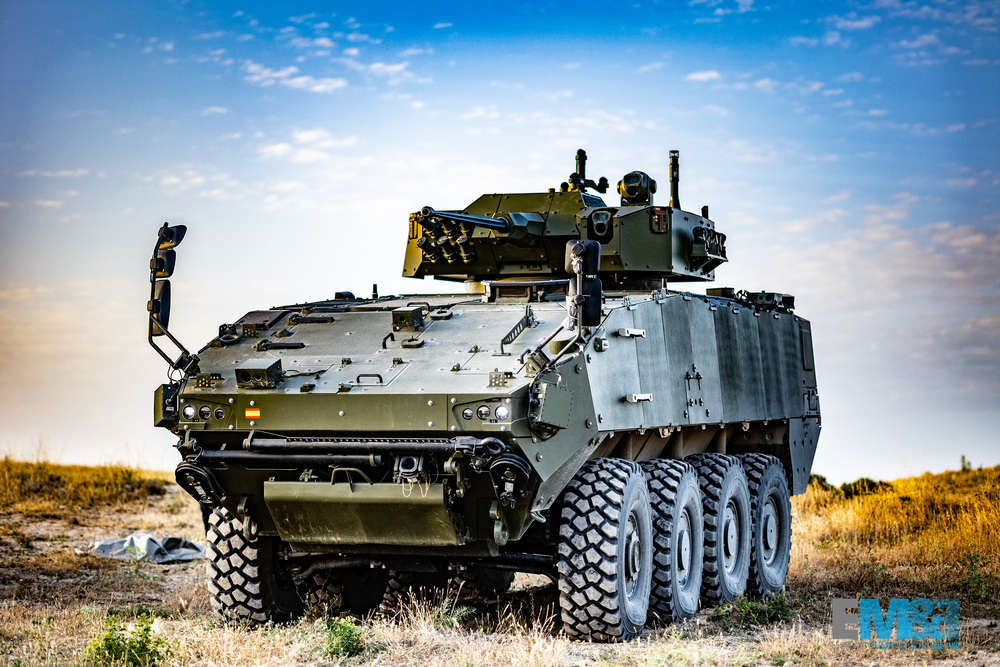
That said, the most diverse systems have been manufactured in Spain for decades. An experience to which some of the great programmes undertaken by our Armed Forces have contributed, such as the Leopardo combat tank -for whose optronics the controversial company ELECTROOP was constituted expressly or the Pizarro (Indra). Later, the recent Escribano driving cameras in phase II or the VCR 8×8 Dragon, where several companies have been selected for the different demonstrators and where it is striking that Escribano, a national manufacturer of electro-optical systems and with consolidation in the national and international market, has not been considered. This has allowed the number of companies that produce optronic components in Spain, or that manufacture them based on the integration of third-party components to offer their products in the national and international market, has been progressively increasing, being more than half a dozen the companies that include them in their catalogue. From Escribano to SDLE and from Tecnobit-Grupo Oesía to COHEMO. A sector that is also promoted by the Ministry of Defence itself, which, in its Technology and Innovation Strategy for Defence (ETID 2020) includes a specific sub-area dedicated to optronic sensors and systems, divided into three categories:
- Systems based on EO/IR detectors (Visible and Infrared Range).
- Night vision systems.
- Systems based on laser technology for telemetry, LIDAR, guidance and target designation.
However, it is important to differentiate between those who integrate third-party solutions by offering products over which they have little control and those who are actually capable of producing all or virtually the entire range of components included in an optronic system by their own means. It is important because, especially in these turbulent times in which supply chains are under permanent tension, dependence on other manufacturers, especially foreign ones, is an unacceptable handicap. Thus, the number of companies that we could include in the list, taking into account those capable of manufacturing everything from wiring to printed circuits and from the chassis to the lenses or the software that manages the whole, is greatly reduced. Very much so, in fact.
This is where Escribano Mechanical & Engineering (EM&E) stands out. A Madrid company that all our readers know, since it has passed through these pages more than once and that has 80.000 m2 of facilities-divided into four buildings- in Alcalá de Henares, the machinery and personnel necessary to undertake each and every one of the steps necessary to produce optronic equipment such as OTEOS and APOLO, which we will discuss below.
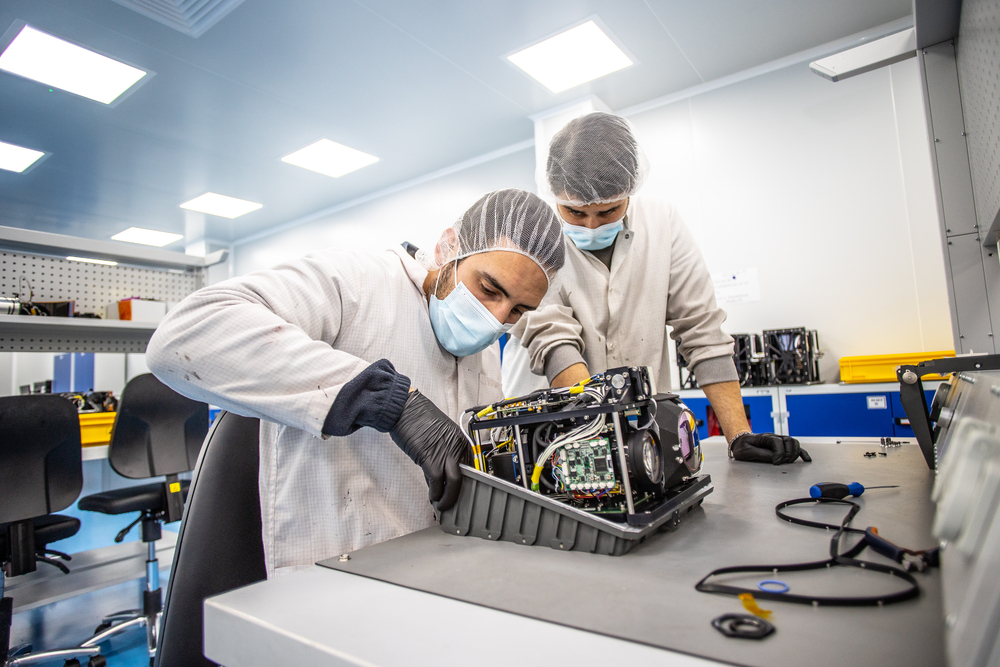
OTEOS (Observation and Tracking Electro-Optical System)
The OTEOS system (Observation and Tracking Electro-Optical System) is an electro-optical observation and tracking system, specially designed for installation in fixed positions or integrated in platforms and land or naval vehicles. As explained on the EM&E website, it is a stabilised and modular platform equipped with the latest technology available on the market in optronic sensors in the visible and infrared band to increase its capacity in terms of detection range, high definition resolution for identification and automatic tracking of targets. Furthermore, its modular design and open architecture allow easy installation and maintenance and integration with external sensors. So far the most generic data that could be applied to practically any system of this type, since all manufacturers always try to influence some of these characteristics. However, it is worth delving a little deeper.
The first thing to focus on is the very construction of OTEOS. The Alcalá de Henares company began as a machining workshop and anyone who has visited the facilities will know that the investment in state-of-the-art machinery is enormous, having acquired more than 90 machines in recent years, with an investment of tens of millions of euros. This can be seen in all their designs, whether they are weapon stations such as the Guardian or Sentinel, guidance systems such as the FGK or in this case optronic systems. All of them have a certain family resemblance, so to speak, since far from resorting to plastics in some cases flimsy or cast parts, -always complicated to access-, they are all components machined by the company itself in aluminum or steel. This allows to combine lightness and modularity so that they can configure their products in such a way that with the removal of a few screws, all critical parts can be accessed. In addition, in this case, modularity is not an advertising mantra, but something very real that becomes clear when you are lucky enough to see one of these teams “naked”. The base of this is made up of a metal frame where the different subsystems such as cameras, processors, cooling equipment, etc., are fitted. All of them can be replaced over time by more modern ones without the need for more changes than putting one in place of the other, connecting them and, where appropriate, updating the software. In the case of other manufacturers, the same operation requires structural changes and complex redesigns, which is a significant handicap that affects the life cycle and especially its cost.

The second aspect related to the construction has to do with the lightness and modularity of the design to be adapted to different platforms and the ability to integrate with other radar sensors. In some cases, this is not very important, for example, if we are talking about fixed installations on land such as those dedicated to border surveillance. In others it is decisive. For instance, when it is installed on ships such as the Civil Guard patrol boats that are subject to all the typical movements of a boat such as heeling or heaving. It must be taken into account that regardless of the displacement of the ship in question, optronic equipment is usually installed on masts. This generates significant forces that, depending on the length of the mast and the total height of the ship above the waterline, can be huge. This in turn implies the need for a heavier, therefore more expensive oversized support. In addition, if instead of vessels of a certain displacement we are talking about smaller patrol boats or even the increasingly common autonomous surface vessels (USV), the installation may be directly impossible. A heavy equipment mounted at the proper height would affect the stability of the boat and with it its safety and the possibility of navigating in certain sea states. By the way, this is something that the company knows very well, since it has been working on this type of vessel for years with Industrias Ferri S.A.
The third has to do with the ability of the system itself to rotate and therefore quickly locate targets. If the set is too heavy, it will need a more powerful electric motor or it will be slower. In the case of the OTEOS, it is capable of turning on its axis at 90º per second, which means turning around in just 4 seconds. Likewise, the lightness and total size of the system also have an impact on inertia, since the greater the weight and size (greater distance from the axis), the greater this is, hence affecting precision. This is so because when it comes to stopping the set during its rotation, one has to count on that inertia, which must be corrected by the self-stabilization systems at the risk of the vibration preventing a clear image. The OTEOS boasts enviable accuracy in this regard, measured in the case of pointing accuracy at less than 0.5 mrad (milliradians) and features both mechanical and digital stabilisation. These are the typical data that eludes the fans, but that the end customer looks at with a magnifying glass, since accuracy depends on them. For those who do not know, it should be clarified that a milliradian is the thousandth part of a radian or, what is the same, the thousandth part of an arc of circumference of the length of its radius. This, applied to the size of the OTEOS, implies a precision of centimeters, if we were talking about units of length and not angular. What is important in any case is that it is able to point where the operator wants and to do so quickly and without undesired movements. For the rest, the OTEOS system is capable of rotating 360º in azimuth. Escribano recently manufactures its own slip rings, which are the data transmission motors that allow continuous 360º rotation and an impressive -60º to +60º in elevation. This makes possible that even installed at the top of a mast of considerable length, it can monitor the terrain practically from its base or cover targets in height.
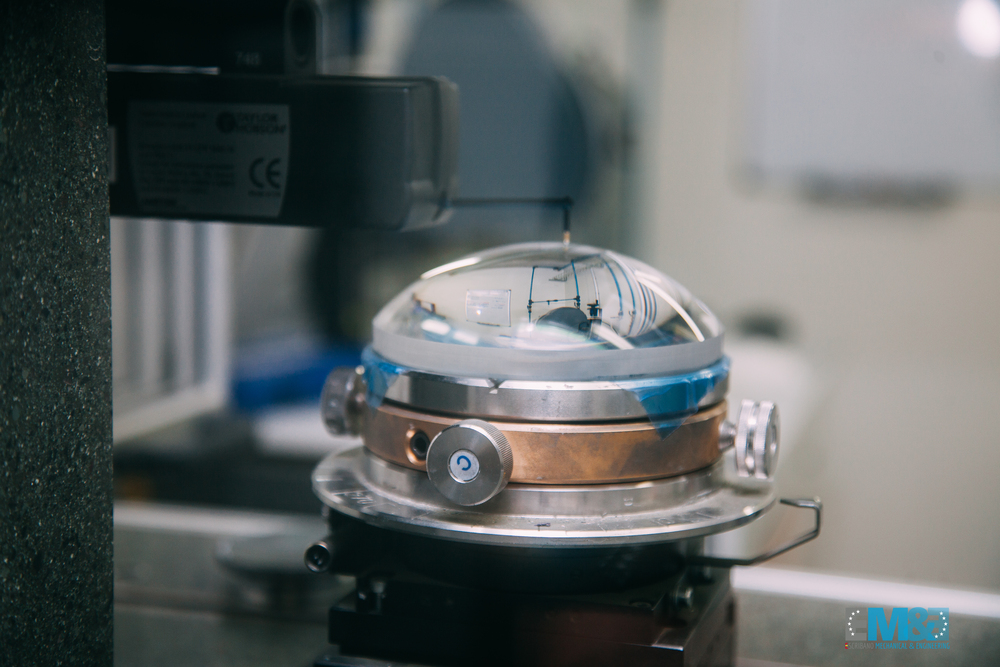
Moving on to the subsystems of the OTEOS, we first come across a daytime camera with a high-definition CMOS sensor. Under this acronym, what is hidden is an active pixel sensor based on CMOS technology (Complementary Metal-Oxide-Semiconductor or Complementary Metallic Oxide Semiconductor) in reference to the type of technology used in the manufacture of integrated circuits on which it is based. The differential aspect in this case is that the information collected by each photosite used to capture ambient light -and the sum of which makes it possible to compose an image- can be sent individually to the processor without producing a halo effect or blooming. This occurs when very intense light affects not only one photosite, but also the neighboring ones, causing quality to be lost. In addition, they are sensors with lower power consumption and cost, although EM&E makes it clear that it is not the only configuration available, but that others can be included depending on the customer's needs. Its resolution is 4096×2160 pixels, the size of each of them being 1.62μm (micrometers) and it is capable of continuous zooming up to 80x. With these characteristics, its detection range exceeds 16 km, the recognition range reaches up to 13,5 km and the identification range goes beyond 12 km.
The second sensor is the cooled IR camera, which features a 3rd generation MWIR sensor. In this case, the acronym refers to the wavelength between 3 and 5μm. The resolution is 1280×720 pixels, each one being 10μm in this case, and it can zoom 20x optically. Thanks to its sensitivity, it is capable of detecting targets at more than 25km, recognising them at 14km and identifying them up to 10km. It is perhaps the most precious resource of the OTEOS system, since it is increasingly for border control, the fight against drug trafficking and human trafficking or even for purely military functions, the ability to operate with guarantees during the night becomes essential.
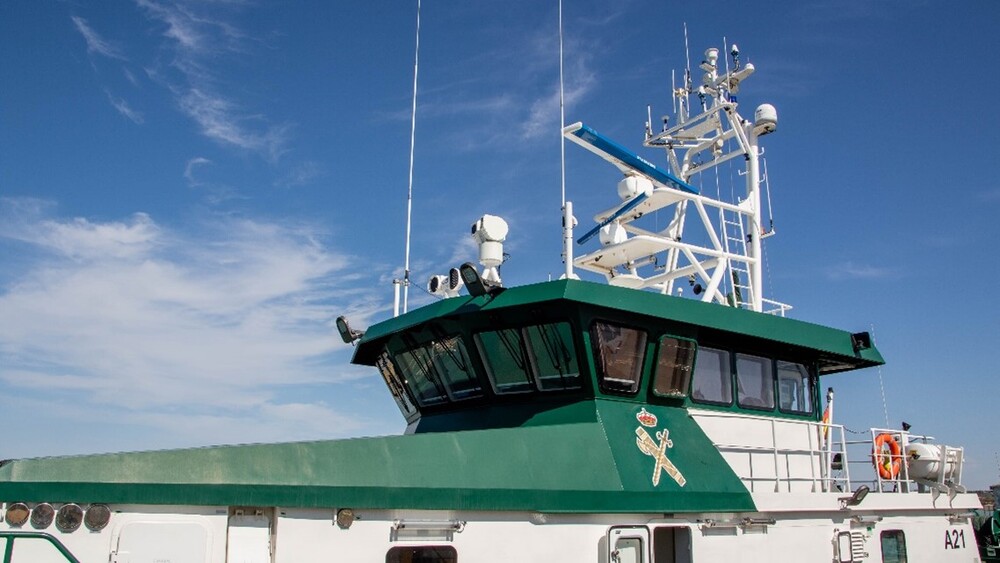
Last but not least, the OTEOS system has a laser rangefinder capable of measuring distances with an accuracy of ±2 meters at a maximum range of 25.000 meters. In this case, although we instinctively equate the inclusion of the rangefinder with the provision of fire data for weapons, in reality it has many other functions. A crucial one would be to allow the pilot of a boat to calculate the position of a target and the time needed to intercept it.
Beyond the characteristics, the OTEOS has already been tested in numerous situations and is in service with both the Civil Guard and the Army or the Customs Surveillance Service of the Tax Agency for its high-speed vessels. The Benemérita acquired 9 systems to equip its patrol boats in November of last year. A contract that was added to the 18 acquired for the SIVE (Integrated Foreign Surveillance Service) sites and the 6 acquired by the Civil Guard Maritime Service. More recently, the Army acquired an OTEOS system to test its integration on board a Milrem Robotics UGV Themis within the framework of the Scorpion programme. The Navy for its part, although it has not yet acquired them, has tested these systems in some of its missions, such as the ATALANTA operation. It is therefore a system that does not exist only on paper, as is the case with so many others, but is in service and has already been tested in all kinds of conditions.
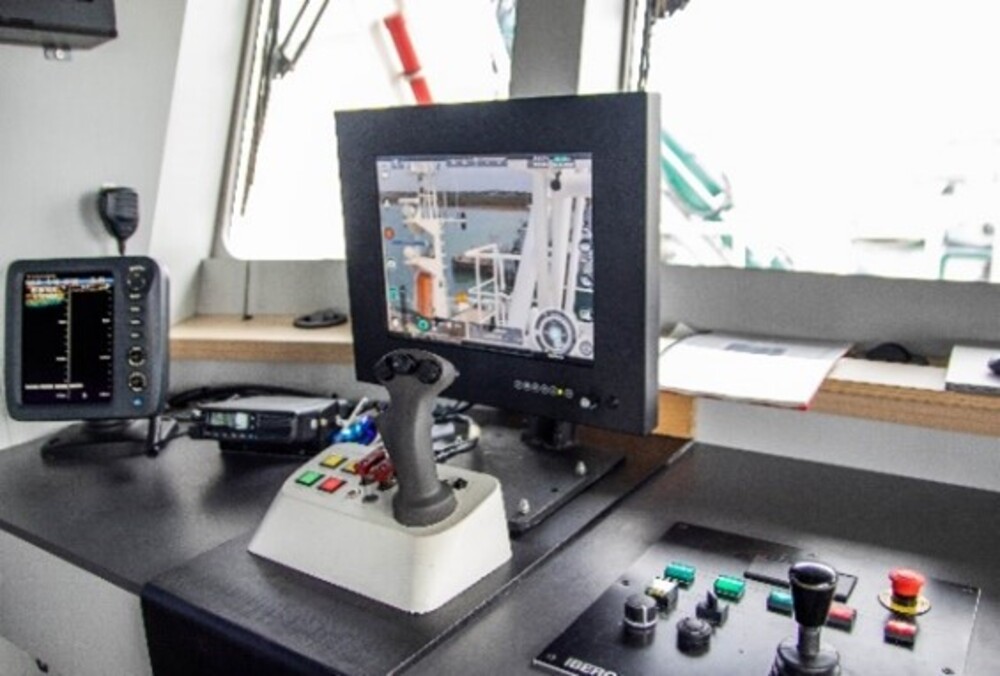
Finally, although throughout the year we will dedicate a specific article to CERVUS III, we cannot miss the opportunity to make some reference to this C-UAS system, of which the OTEOS optronic system is a fundamental part. The presentation of this system took place last May in the framework of the “Workshop with companies “15” FUERZA 2035, Command and Control in the Protection of a Command Post”, organised by the Directorate of Acquisitions (DIAD) of the Logistical Support Command of the Army (MALE) and the General Subdirectorate of Technology and Innovation Planning (SDGPLATIN) of the General Directorate of Armament and Material (DGAM), and held at the the Academy of Engineers (ACING) in Hoyo de Manzanares (Madrid).
The CERVUS system is part of a development initiated by the Army itself as a response to the need to investigate whether or not the electronic warfare means provided by the 31st Electronic Warfare Regiment could carry out early detection of RPAS, which led to the development of a system soft kill. This initiative was later joined by TRC and, even more recently, by EM&E, which has added hard kill capabilities to its original soft kill capabilities by incorporating the Guardian 2.0 weapon station and the OTEOS system in a combination that was also demonstrated to NATO leaders.
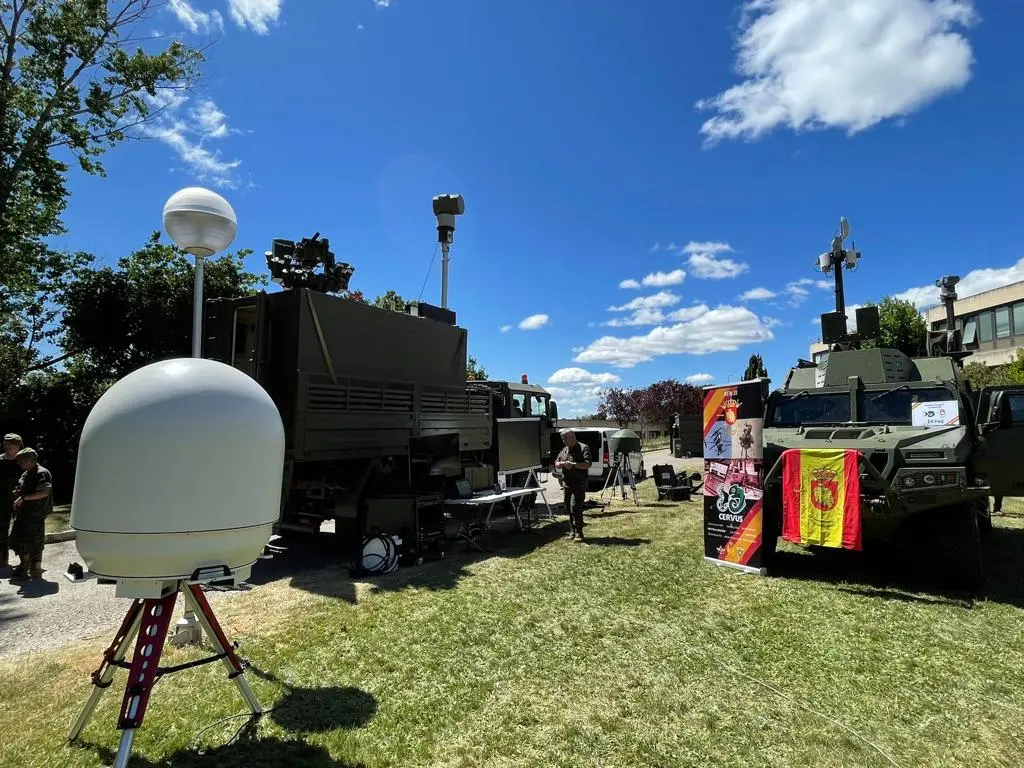
APOLLO: beyond the Guardian 30
If the OTEOS system is now almost an old acquaintance, the APOLO optronic system is an absolute novelty about which the company has barely released information, despite the fact that in recent videos we have been able to verify that it has already been mounted on the Guardian 30 RWS . For these and other reasons, we could not pass up the opportunity to talk about it.
In EM&E they define the APOLO system as the "new generation of gyro-stabilized electro-optical systems in infrared sensors and telemetry for observation, surveillance, target acquisition missions as well as being integrated into the firing direction of a platform". The rest of the explanation that we can find on its website is just as generic. However, it is a totally new system and it is a clear step forward compared to the SPS and SGS systems used until now in the Guardian 30.
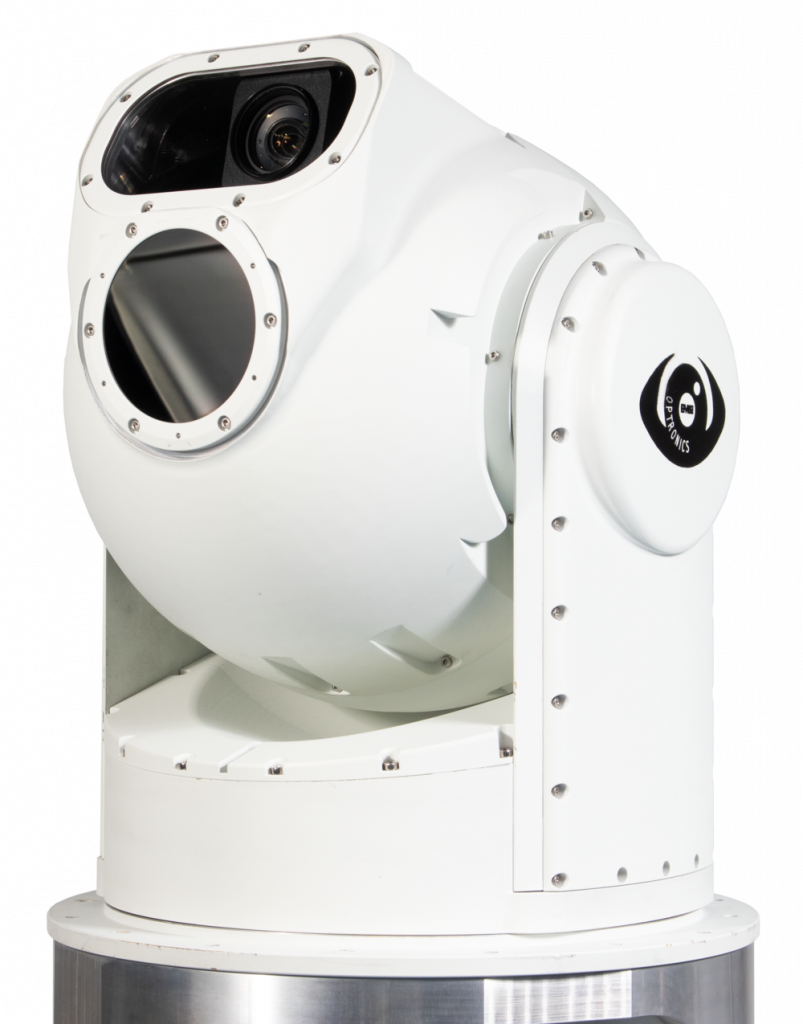
If we remember, the variant of the Guardian that we could see in operation live in March 2021 had two different viewfinders as elements of vision and aim. The first of them, located in the front part of the turret and in line of fire with the main gun, was the SGS (Stabilized Gunnery Sight). The second consisted of a panoramic viewfinder for the head of the vehicle called SPS (Stabilized Panoramic Sight) and was mounted on the roof. In this case, it benefited from a 360º field of vision, although otherwise both were stabilised in two axes and had a third-generation thermal camera, daytime high-definition TV, and a laser rangefinder associated with the ballistic calculator of the VCR 8×8 Dragon. How could it be otherwise, both viewers had tracking capability (tracking) of targets independently, counting that of the shooter with an automatic orientation system of the barrel sight with the scope reticle to make immediate fire on the target. In addition, this scope's side-scan capability (azimuth -10º to +60º) allowed the shooter to see in a wider field without needing to move the turret or use the gimbal's ability to keep a moving target on target. Finally, another important quality, although it had more to do with the turret management system than with the scopes themselves, was that the positions of the operators were interchangeable, using their consoles and controls interchangeably to operate the turret and both scopes. In other words, the only difference between the position of the head of the vehicle and that of the shooter was the power to assign priority when designating the target over what to do. In short, these were systems with significant capabilities that more than met the requirements of the Ministry of Defence, hence their choice. However, they had some shortcomings or, at least, a wide margin for improvement, something that the Madrid company has been working on in recent months until the APOLO was born.
The latest images of the turret, which has been evolving in this time, gave us a very different image. These were taken during the launch test of the SPIKE LR2 missile carried out a few weeks ago and in which it was also possible to see, by the way, the new vertical launcher, developed together with Pap Tecnos (Rafael's Spanish subsidiary). Thus, replacing the previous fan launcher. Advantages of the modular design and an entire adaptation exercise by both companies that benefits us all, because instead of going to war, they have proven capable of collaborating in pursuit of a common goal.
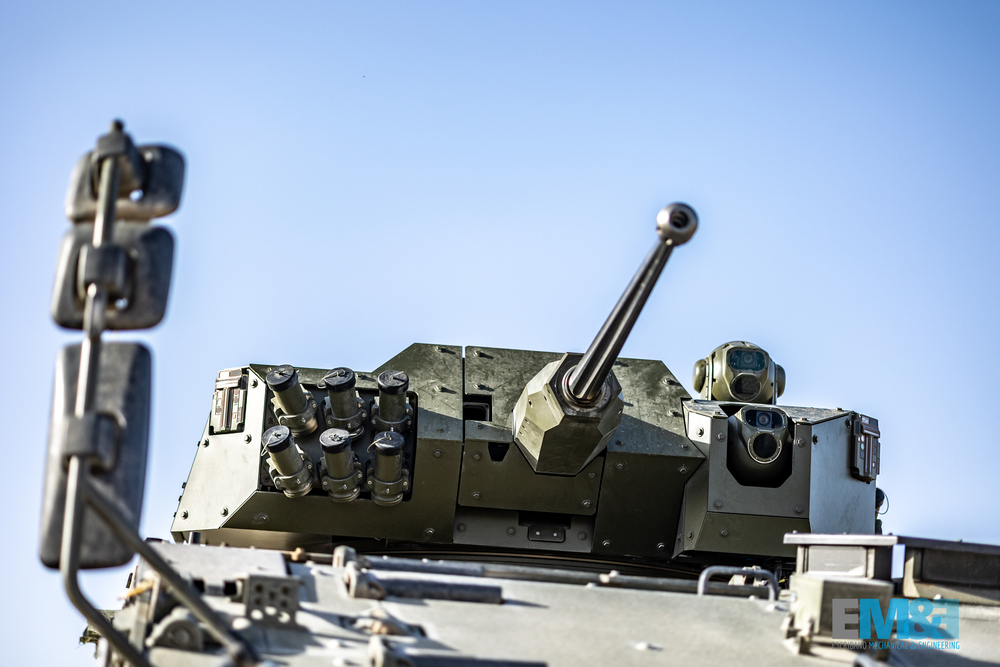
Leaving this aside, one of the most striking aspects of the test was the issue of optronic sights. Instead of the cumbersome rectangular viewfinders mounted until then, two spherical APOLO systems were installed. Indeed, much more compact and clean of lines, in which the rangefinder, the daytime camera and the infrared were mounted vertically. A change that had not been publicly announced, but was expected by many. As can be seen in the video, the size of the mount is significantly smaller and the fit, in the case of the shooter's scope, is very different, being considerably more protected. This is undoubtedly one of the things that were sought and that have been achieved. The APOLO system, due to its shape, is more resistant and offers a smaller exposed surface, something that is perfectly appreciated when comparing both images.
The changes do not end at the casing and element configuration, but also affect the components. First to the IR camera, it includes a 3x640x512μm 15rd generation MWIR sensor. Presumably the cooling system has changed, although we cannot confirm this at the moment. The most interesting thing is that the continuous optical zoom capacity has increased from 8x to 20x, which gives an idea of its power. It also improves image processing capabilities including new modes. The detection, reconnaissance and identification distances have grown going for NATO targets (2,3m x 2,3m) from 17,3 to 19,1 km in the first case, from 5,4 to 6,5km in the second and from 3,6 to 4,4 in the third which is a considerable increase that will directly benefit the combat capacity of the VCR 8x8 Dragon.
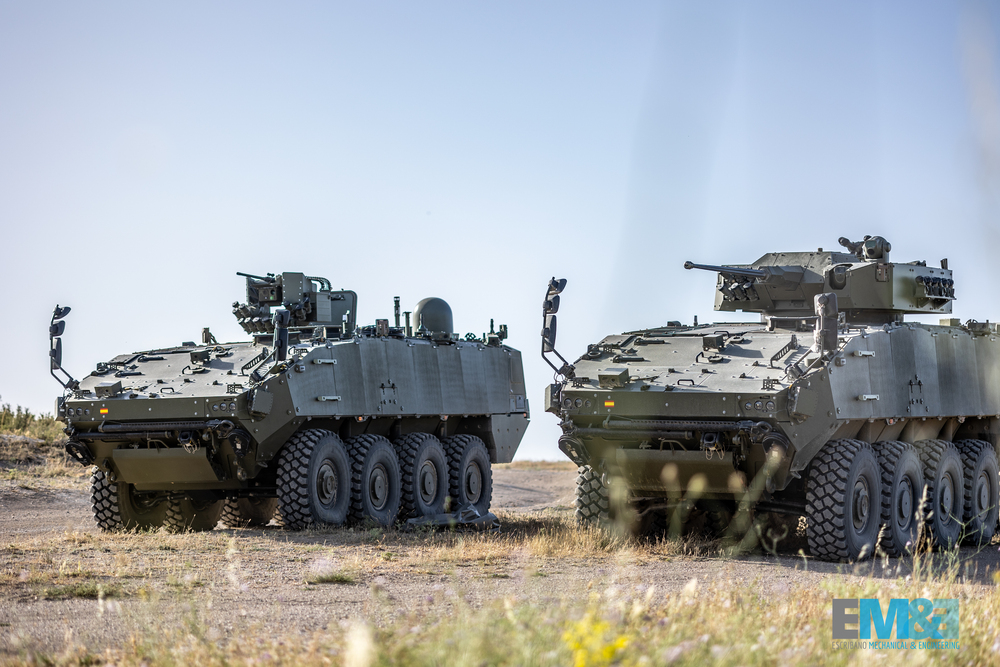
In the case of the daytime camera, the APOLO system, still sharing the resolution with the previous one (1920×1080 pixels), can now do continuous optical zoom at 30x compared to the previous 20x. What has changed again are the detection, recognition and identification distances, slightly reducing them, and improving other functions such as image processing. The explanation is simple: the size of the lens is smaller, which makes it possible for it to be placed next to the rangefinder in the upper position. Even so, the loss in range is negligible, as in all cases the range is greater than that of the most common primary weapons it can be mounted alongside, and is more than compensated for by the improvements to the IR camera. Thus, for example, the 44x30mm Bushmaster II Mk 173 cannon of the Guardian 30 does not fire effectively beyond 3.000 meters, while the range of the Spike LR2 missile is 5,5 km. However, in this case it is irrelevant, since which has its own browser and ability fire and forget.
Finally, the laser rangefinder remains the same, with a maximum range of 15 km and an accuracy of ±1 meter up to 80% of this distance, that is, up to 12 km, from which it is progressively reduced. The wavelength is the same as in the SGS and SPS (1550 nm) and the frequency is programmable at 1, 3, 5 and 10 Hz.
Regarding the weight of the APOLO, it is currently the lightest solution on the market with these characteristics, weighing much less than 20kg, it is a real detail for a system that must comply with a good number of certifications including protection against different calibers, dust , humidity, etc. All this, as we have explained in the previous section regarding OTEOS, offers different benefits. In addition, the reduced weight and design of the APOLO have an interesting twist and that is that it allows it to be mounted in reverse mode, that is, hanging from the platform and not on it. In the same way, being spherical, it is aerodynamic, something that fully introduces EM&E in the race to equip aircraft, both civil and military. After all, if the OTEOS has been installed in the patrol boats of the Civil Guard and the Customs Surveillance Service, why not do the same in airplanes and helicopters...
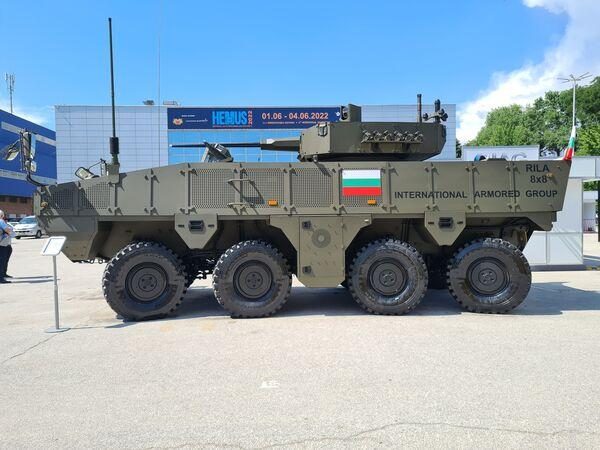
A final note
The Madrid-based company EM&E has participated in the recent NATO Summit, held in Madrid, presenting some of its latest developments, such as the OTEOS and APOLO optronic systems which we have discussed. Besides, the CERVUS III national anti-drone system that precisely uses the OTEOS in combination with the Guardian 2.0 RWS, as well as with systems soft kill to offer a complete C-UAS solution.
The exhibition, to which Indra also brought its ARMS solution (Anti-RPAS Multisensor System) and Telefónica in collaboration with the Ministry of Home Affairs did the same with the SIGLO-CD (Global System Against Drones) project, was visited by the different delegations international figures and personalities from NATO, as well as by some authorities of the Government of Spain. Thus beeing a real milestone, since it is the first time that an exhibition of this type has been organised at such a high-level summit in Spain.
Of all the proposed solutions, we have talked about two, each of which is a benchmark in its category. Especially the APOLO system, due to the importance of the VCR 8×8 programme, as well as the Guardian 30 turret, deserves our attention. After all, the success of this vehicle will largely depend on its capabilities, but not only. Let's not forget that the APOLO and the Guardian 30 are also being tested on board IAG's 8×8 RILA and that it will not be the last vehicle to end up incorporating at least one of them.
Meanwhile, EM&E keeps moving forward, sometimes taking huge risks. It is a characteristic of the company, but it can be extended to many others in the defence sector in Spain, which must innovate to conquer new markets abroad due to the lack of national clients of sufficient importance to justify some investments. It would be good if a substantial part of the announced and expected increase in defence budgets were allocated to the recovery of capabilities, supporting the defense industry in the process (itself a key capability) and not to other tasks that are easier to sell to the public opinion, but much less pressing.



Be the first to comment